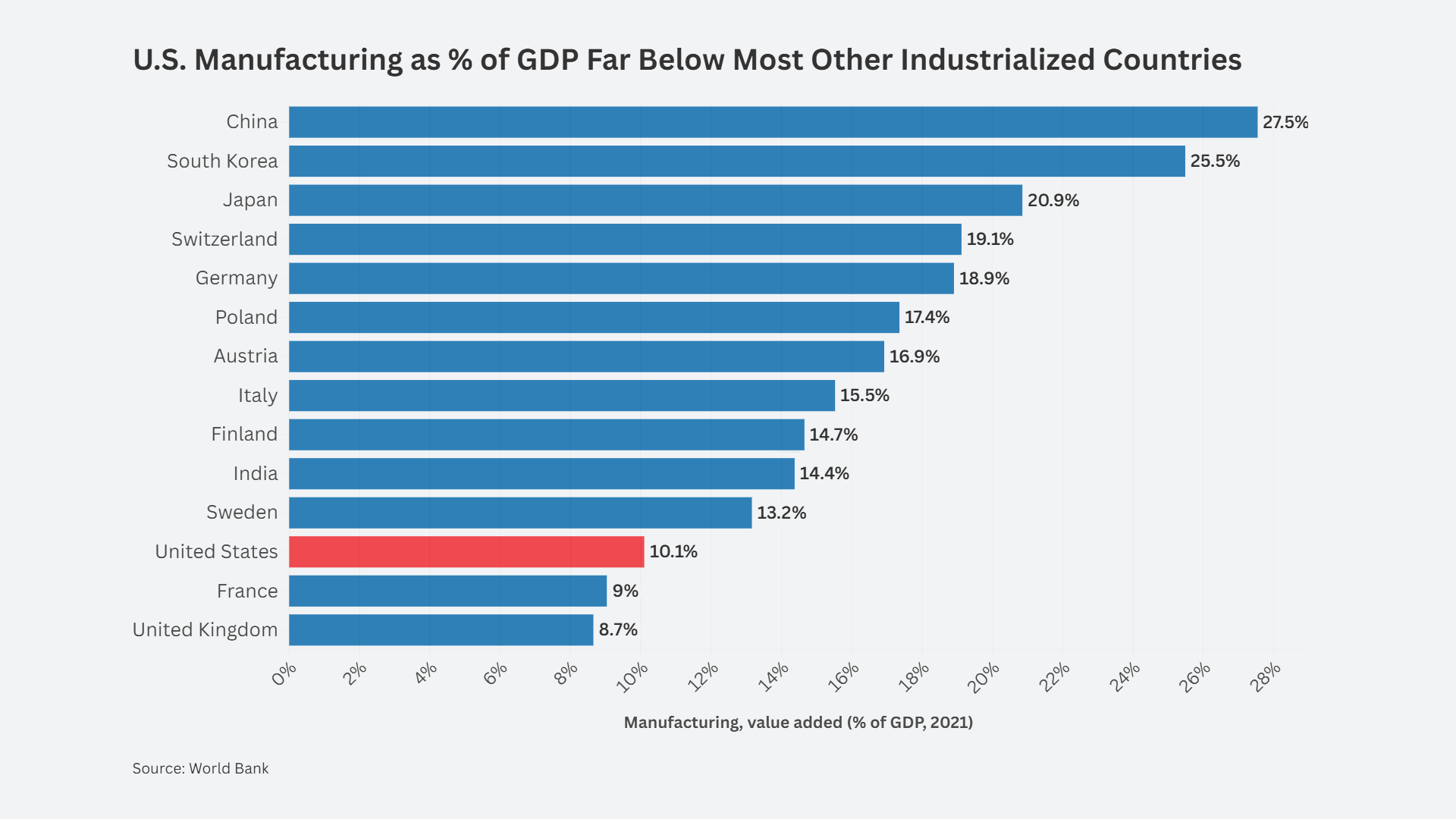 Washington’s latest trade controversy has blown up over a dispute over differing sets of statistics for measuring our foreign trade. Trump administration officials are advocating for wider use of export/import measures that exclude pass-through goods, while Commerce Department officials advocate the older measures, total exports and total imports.
Washington’s latest trade controversy has blown up over a dispute over differing sets of statistics for measuring our foreign trade. Trump administration officials are advocating for wider use of export/import measures that exclude pass-through goods, while Commerce Department officials advocate the older measures, total exports and total imports.
by Jeff Ferry, appears on The Hill
The newer measures, known as Domestic Exports and Imports for Consumption, provide a more accurate representation of how trade impacts the U.S. economy. For example, if an auto engine comes from Germany to a port in the U.S., and is then immediately shipped to Mexico for assembly into a vehicle, the value of that engine should not figure in either Domestic Exports nor Imports for Consumption. Since that engine has not undergone any value-added nor created any work for U.S. workers, it does not contribute to the U.S. economy in any way. Last year, Foreign Exports (i.e. pass-through goods) accounted for $224 billion or 15 percent of our total exports of $1.45 trillion.
Critics of the narrower measures argue that the import measure, Imports for Consumption, is not as fine-tuned as the export measure. They have a point and the Commerce Department needs to continue to improve all their data series, to keep up with changes in the real world, and to provide us greater visibility into the underlying economic realities.
But the plain fact is that whatever measures you use, the data shows that free trade agreements (FTAs) have been a disaster for U.S. trade and the U.S. economy. In the last 25 years, our trade position with our two NAFTA partners has changed from rough balance in 1992 to a whopping huge deficit of $160 billion last year. The fundamental cause of this deterioration is a U.S. economic system that is heavily weighted against manufacturing. Under NAFTA, Mexico benefits strongly from its low wages, its more lax environmental standards, and other features making it an attractive place for a multinational to do business. Canada doesn’t have dramatically cheaper wages than the U.S., but in other ways, its costs are lower. At least one auto multinational has said it chose to build a plant in Canada because it could save some $1,300 per vehicle on health care costs.
And it’s not just NAFTA. After the Korean-US trade agreement was approved in 2011, our trade deficit with Korea more than doubled to $32 billion on the narrower measure last year–or $28 billion on the wider measure. Whichever measure you look at, the story is the same. Many of our trading partners are skilled at keeping the lid on their imports from the U.S., whatever it says in these agreements. One of the most contentious issues in the Korean negotiations was on the auto industry. According to last year’s figures, our motor vehicle exports to Korea were $2.6 billion. Their motor vehicle exports to the U.S. were $25 billion, nearly ten times our figure!
Cross-Border Beemers and Other Urban Myths
Attacking the narrower trade measure, the Wall Street Journal offered a hypothetical example of a BMW car dealer in Buffalo, N.Y., that imports 50 BMWs for shipment to Canadian customers, and its theoretical impact on the trade statistics. However, this imaginary example could never happen since the German car giants do not allow dealers to ship cars across borders. I spoke to a director at a local German car dealership to confirm this fact, and got some interesting insight. German manufacturers specifically forbid their U.S. dealers from selling cars to customers outside the U.S., and they penalize them with fines and reductions in quota if they are caught doing so.
The car companies have quite a bit of leeway in defining the origin of their products. According to my friend in the car business, several years ago Mercedes found it had a big hit on its hand with its C-Class automobile. Germany could not keep up with production, so Mercedes had its plant in South Africa begin producing them too. But to keep the “Made in Germany” label on as many cars as possible, Mercedes carried out QA (Quality Assurance) on the C-Class parts in Germany before they were sent to South Africa. This allowed Mercedes to label the cars “Made in Germany.” Even though QA is a small proportion of the total value-added in an automobile, Mercedes was not breaking any rules labeling those cars as German-made. No doubt other car companies do similar things, including labeling parts and products as U.S.-made if it helps their marketing.
No export or import measures are perfect. But the bottom line is, however you look at it, we have a half a trillion dollar hole in our trade accounts and that represents a significant loss of U.S. jobs, production and income. We need to a national goal to fix it.
Jeff Ferry is CPA Research Director













